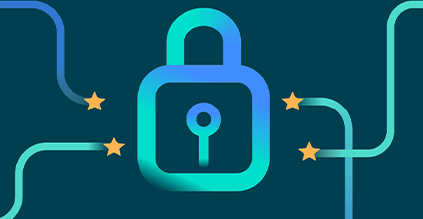Wet signature, electronic signature, and digital signature
Before proceeding, it is important to define and distinguish terms. Wet signature, e-signature, and digital signatures are all related concepts with overlap in their use and meaning, but they are not synonymous.
What is a wet signature?
A traditional wet ink signature is a signature applied using analog tools, such as an ink pen or the graphite of a pencil, and applied to a physical document, such as a piece of paper. People around the world have relied on wet signatures for contracts and documents through the ages, and this is typically the first impression people have when thinking about signatures and signing.
Electronic signature
An electronic signature replicates the purpose and significance of a wet signature but through digital means. Using an electronic signature platform, the e-signature software can create and apply an electronic signature to an electronic document. There are three generally recognized types of electronic signature, each with their own standards.
- The Simple Electronic Signature: A simple signature is the baseline form of a signature and has no specific requirements or security standards. A .jpg image of a handwritten signature pasted into a Word document is an example of an electronic signature. This is the weakest and least admissible form of signature in terms of enforceability and the law.
- The Advanced Electronic Signature (AES): An advanced e-signature includes authentication and security standards that help verify the identity of the signer and the authenticity of the signature. This is the most commonly used type of electronic signature.
- The Qualified Electronic Signature (QES): The third type of signature includes the security standards of an AES with an extra step. The signature must include a digital certificate from a qualified trust service provider to verify the signature.
Finally, a digital signature is not a signature at all, unlike the previous terms discussed above. Instead, the digital signature is encryption/decryption technology supporting the security of the AES and QES.
Disadvantages of wet signatures
For over two decades, electronic signature adoption has been growing as organizations contend with the challenges and disadvantages of relying solely on physical signatures.
- Turnaround time: Digital processes are more expedient than physical processes. Typical physical business processes involve mailing paper documents, arranging in-person meetings to review contracts, photocopying, archiving, and document review. All of these steps inflate the time to completion of your documents.
- Cost: Beyond time is costs. Purchasing, printing, and storing paper incurs costs that are otherwise eliminated in a digital process.
- Recipients: Electronic signature software enabled an organization to send the same document for signature to multiple recipients. Signers can sign simultaneously or at their convenience. Contrast this with the logistics or organizing multiple meetings with multiple signers for complex processes.
- Record Keeping and Retrieval: Ensuring a contract can be retrieved to settle disputes is essential, and storing a hard copy of the contract leaves your organization vulnerable to human error or the archive becoming damaged.
- Social Responsibility: Electronic signatures is a greener choice than maintaining paper-dependent processes. Drastically cut the paperwork in your sales and onboarding processes as a move towards a more sustainable business model.
Top reasons to prioritize electronic signatures
- Anywhere, Anytime Signing: OneSpan Sign empowers our signers to sign whenever and wherever they like. Whether online or offline, at home or the office, you can complete transactions and request signatures.
- Mobile-friendly Technology: OneSpan Sign is designed with mobile in mind and supports all manner of mobile devices including Mac iOS iPads, iPhones and Android tablets and smartphones.
- Reusable Templates: Leverage reusable document templates and automation to streamline your signing process. Even building a new document is intuitive and straightforward with our drag & drop document builder.
- Digital Workflows: E-Signatures are the cornerstone of digital processes. Ensure business continuity and establish entirely remote services with electronic signatures.
- Secure Signing: OneSpan Sign provides a high level of identity assurance with identity verification and biometric authentication options. Furthermore, digital signature technology and tamper seals protect the document between signers.
- Compliance: OneSpan Sign is compliant with ISO/IEC 27001, ISO/IEC 27017, ISO/IEC 27018, SOC 2 Type II, HIPAA, FedRAMP, and other stringent requirements.
How it works: add a signature to your electronic documents
This tutorial demonstrates how OneSpan Sign (formerly eSignLive) signature solution can be used to digitally sign documents. The video and written instruction assumes that the signer received the signature request invitation through their email service:
- Open the email invitation found in your inbox. Within, click the button to be taken to access the document in OneSpan Sign.
- Next, you may be prompted to complete an e-signature disclosure and consent form. There is a checkbox that will indicate you have read the document. Once complete, click the Accept button to move onto the next electronic document.
- A document preview for each document to be signed will appear in the left-hand menu of the user interface. The example video above assumes two documents for this transaction.
- Now it is time to e-sign the document. Click on the Signature field to insert your signature. There may be additional form fields you need to complete. Navigate through the document and provide any necessary information.
- Repeat step 4 for any further documents. Then, click Confirm.
- Congratulations! You have successfully applied an electronic signature to your document using OneSpan Sign!
Browse more video tutorials about creating electronic signatures for all your important digital documents in the OneSpan Resource Center:
- How to E-Sign a Document from E-Mail
- OneSpan Sign E-Signing Experience
- OneSpan Sign Mobile App: How to Send and E-Sign Documents
Electronic signatures frequently asked questions
Are Electronic Signatures Legal?
Yes. Electronic signatures and e-signature tools can be used to signed documents, electronic transactions, or other contract in electronic form. E-Signature laws have been passed in over 60 countries regulating and establishing their use. Notable examples of e-sign laws include:
- Electronic Signatures in Global and National Commerce Act (ESIGN Act): United States
- Universal Electronic Transactions Act (UETA): United States
- eIDAS: European Union
When Must a Wet Signature Be Used vs an E-Signature?
In almost all applications, an electronic signature can be used in place of a wet ink signature, but there are exceptions. Refer to the legal requirements and regulations in your country for specifics on this point.
One common example of legal documents in which an electronic signature is not acceptable is when a notary is required. However, many governments implemented emergency orders in 2020 to enable remote online notarization (RON). RON allows notaries and the signatory to complete and notarize contracts without meeting face to face. These requirements may or may not have expired. Refer to your local laws for more information.
Can OneSpan Sign Apply My Signature as a Wet Signature?
OneSpan Sign helps organizations digitize their processes and capture the consent of their signers with secure, reliable electronic signatures. However, OneSpan Sign also supports functionality for signers to upload a .jpg or .png image of their signatures for use in documents. In addition, signers can choose to draw their signature using their finger or a stylus on the track pad or touchscreen to create their signature in real time.







